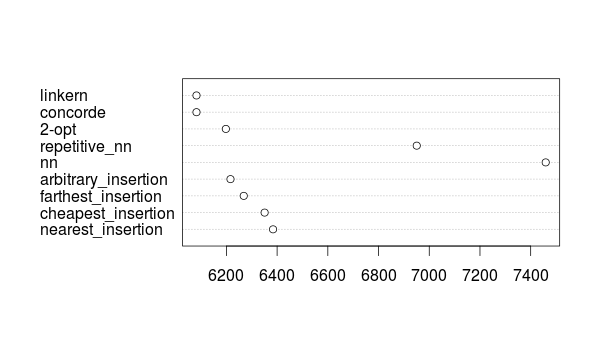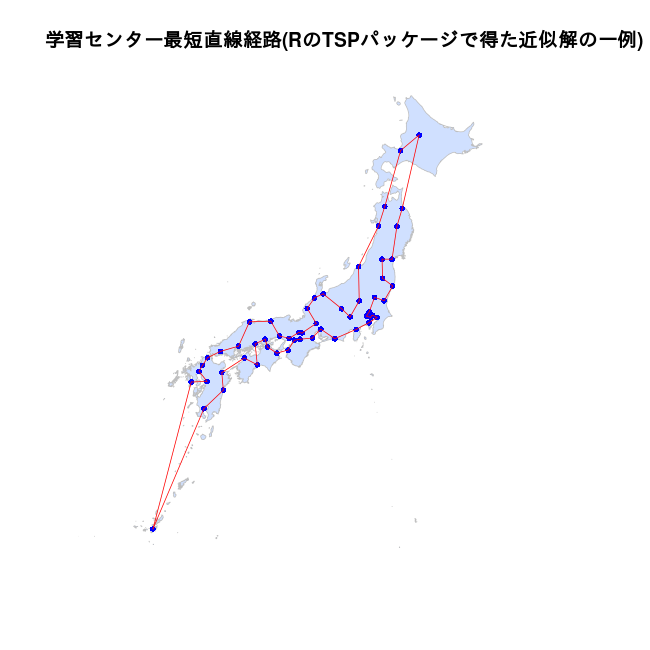巡回セールスマン問題 method=”concorde”
solve_TSP( x, method, control )のアルゴリズムに“concorde”, “linkern” を使用する。
(準備)
The Traveling Salesman ProblemからSolver パッケージをダウンロード
OSはzorinOSを使っているので
concorde-linux,linkern-linuxをDL ー> 解凍 ー> 適当なフォルダ(ここでは/home/user)に移動
ー> 「ファイルのプロパティ」で実行権限を「誰でも」にする
download informationに「 ~are available for academic research use」とあるので使用する目的によっては許可が必要。
|
|
nearest_insertion cheapest_insertion farthest_insertion
6383.965 6350.778 6268.405
arbitrary_insertion nn repetitive_nn
6216.112 7459.273 6950.645
2-opt concorde linkern
6197.878 6082.051 6082.051

‘2-opt’も健闘したけど’concorde’と’linkern’(3回やって3回とも6082.051km)とは100km以上の差
methodは’concorde’
|
|

- 「メタヒューリスティクス2」の経路とは中国地方・四国地方の回りかたが異なる。